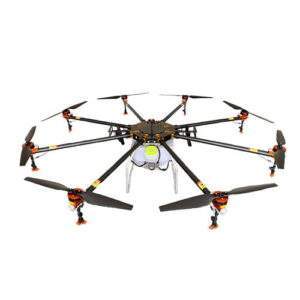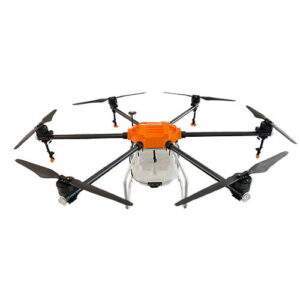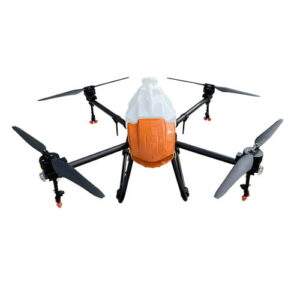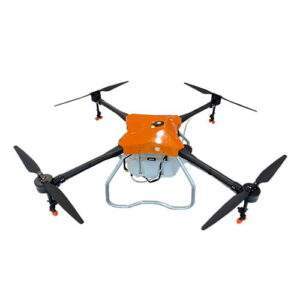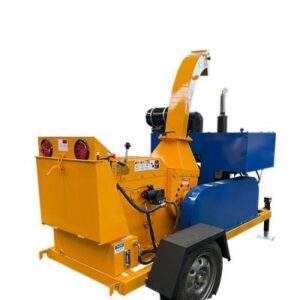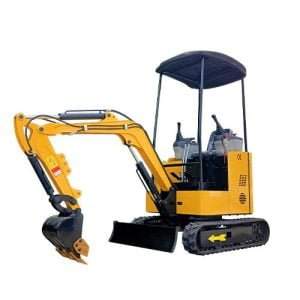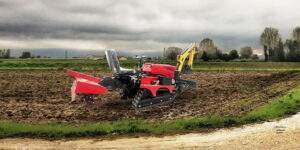Choosing the Right Drone in Agriculture: Tips and Recommendations
Introduction
The advent of modern technology has revolutionized various industries, and agriculture is no exception. One of the most significant advancements in recent years is the use of drones in agriculture. These unmanned aerial vehicles (UAVs) are transforming traditional farming practices through precision farming, offering numerous benefits that enhance productivity, efficiency, and sustainability. This comprehensive guide explores the use of drones in agriculture for precision farming, discussing their applications, advantages, and practical implementation strategies.
What is Precision Farming?
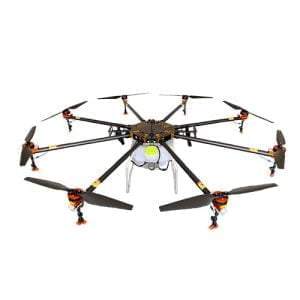
Definition and Overview
Precision farming, also known as precision agriculture, is a farming management concept that uses advanced technologies to optimize field-level management regarding crop farming. This approach involves collecting and analyzing data to make informed decisions about planting, fertilizing, and harvesting, ultimately aiming to improve yield and reduce waste.
The Role of Drones in Precision Farming
Drones play a crucial role in precision farming by providing high-resolution aerial imagery, real-time data collection, and advanced analytics. They help farmers monitor crop health, assess soil conditions, and manage irrigation and fertilization with greater accuracy.
Applications of Drones in Agriculture
Crop Monitoring and Health Assessment
Drones equipped with multispectral, thermal, and RGB cameras capture detailed images of crops. These images help farmers detect issues such as pest infestations, disease outbreaks, and nutrient deficiencies early, allowing for timely intervention.
Soil Analysis and Mapping
Drones in agriculture can be used to perform soil analysis and mapping. By analyzing the soil’s properties, including moisture levels, temperature, and composition, farmers can make more informed decisions about irrigation, fertilization, and planting strategies.
Precision Spraying and Fertilization
Drones can be equipped with spraying systems to apply pesticides, herbicides, and fertilizers precisely where needed. This targeted approach reduces chemical usage, minimizes environmental impact, and ensures that crops receive the right amount of nutrients.
Irrigation Management
Using thermal imaging, drones can identify areas of the field that are over or under-watered. This information enables farmers to adjust their irrigation systems to ensure optimal water distribution, conserving water and improving crop yields.
Yield Estimation and Mapping
Drones can help estimate crop yields by analyzing plant height, density, and health. This data allows farmers to predict harvest volumes more accurately and plan logistics accordingly.
Benefits of Using Drones in Agriculture
Increased Efficiency
Drones significantly reduce the time and labor required for various farming tasks. They can cover large areas quickly, providing real-time data that helps farmers make prompt decisions.
Cost Savings
By optimizing resource use and reducing waste, drones help farmers save on inputs such as water, fertilizers, and pesticides. This cost-saving aspect is particularly beneficial for large-scale operations.
Enhanced Crop Health and Yield
With precise monitoring and targeted interventions, drones help improve crop health and yield. Early detection of issues and precise application of treatments lead to healthier plants and higher productivity.
Environmental Sustainability
Drones in agriculture promote sustainable farming practices by reducing the overuse of chemicals and water. This environmentally friendly approach helps preserve natural resources and reduce the ecological footprint of farming activities.
Improved Decision-Making
The data collected by drones provide valuable insights that enhance decision-making processes. Farmers can make data-driven decisions about planting, irrigation, fertilization, and pest control, leading to more effective and efficient farming practices.
Table: Comparison of Traditional Farming vs. Precision Farming with Drones
| Aspect | Traditional Farming | Precision Farming with Drones |
|---|---|---|
| Crop Monitoring | Manual, labor-intensive | Automated, high-resolution imagery |
| Soil Analysis | Manual sampling, limited data | Comprehensive, real-time mapping |
| Spraying and Fertilization | Uniform application, potential waste | Targeted application, minimal waste |
| Irrigation Management | Manual adjustments, inefficient | Automated, optimized water use |
| Yield Estimation | Visual inspection, less accurate | Data-driven, highly accurate |
| Environmental Impact | Higher chemical use, resource waste | Reduced chemical use, sustainable |
Implementing Drones in Precision Farming
Selecting the Right Drone
Choosing the right drone for agricultural use involves considering factors such as payload capacity, flight time, camera quality, and software compatibility. It’s essential to select a drone that meets the specific needs of your farming operations.
Training and Education
Proper training and education are crucial for effectively using drones in agriculture. Farmers and operators should be trained in drone piloting, data analysis, and interpretation to maximize the benefits of this technology.
Regulatory Compliance
Ensuring compliance with local regulations and obtaining necessary permits is vital when integrating drones into agricultural practices. Farmers must stay informed about aviation laws and restrictions in their region.
Data Management and Analysis
Effective data management and analysis are critical for leveraging the full potential of drones. Using advanced software tools, farmers can process and analyze the data collected by drones to make informed decisions.
Maintenance and Upkeep
Regular maintenance and upkeep of drones are essential to ensure their longevity and reliability. Farmers should establish a maintenance schedule to inspect and service their drones regularly.
Challenges and Solutions
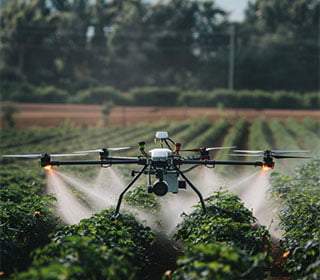
Initial Investment Costs
While drones offer long-term cost savings, the initial investment can be substantial. Farmers can explore options such as leasing drones or applying for grants and subsidies to offset the costs.
Technical Expertise
Operating drones and analyzing data require technical expertise. Collaborating with agricultural technology firms or hiring trained professionals can help bridge the knowledge gap.
Data Security
Ensuring the security of data collected by drones is crucial. Farmers should implement robust data protection measures and use secure software platforms to safeguard their information.
Weather Conditions
Weather conditions can impact drone operations. Farmers should monitor weather forecasts and plan drone flights during favorable conditions to ensure accurate data collection.
Conclusion: Drone in Agriculture
The use of drones in agriculture for precision farming is transforming traditional farming practices, offering numerous benefits that enhance efficiency, productivity, and sustainability. By leveraging advanced technology, farmers can make data-driven decisions that improve crop health, optimize resource use, and increase yields. As the agricultural industry continues to evolve, the integration of drones will play an increasingly vital role in achieving sustainable and efficient farming practices.
FAQ
What are the main benefits of using drone in agriculture?
The main benefits include increased efficiency, cost savings, enhanced crop health and yield, environmental sustainability, and improved decision-making.
How do drones help in precision farming?
Drones assist in precision farming by providing high-resolution imagery, real-time data collection, and advanced analytics. They help with crop monitoring, soil analysis, precision spraying, irrigation management, and yield estimation.
What types of drones are used in agriculture?
Various types of drones are used in agriculture, including fixed-wing drones, multirotor drones, and hybrid drones. Each type offers different capabilities and is suited for specific agricultural applications.
How can farmers ensure regulatory compliance when using drones?
Farmers should stay informed about local aviation laws and regulations, obtain necessary permits, and ensure their drones are registered and operated within legal guidelines.
What are the challenges of using drones in agriculture?
Challenges include initial investment costs, the need for technical expertise, data security concerns, and the impact of weather conditions on drone operations. Solutions include exploring funding options, collaborating with tech firms, implementing robust data protection measures, and planning flights during favorable weather conditions.

